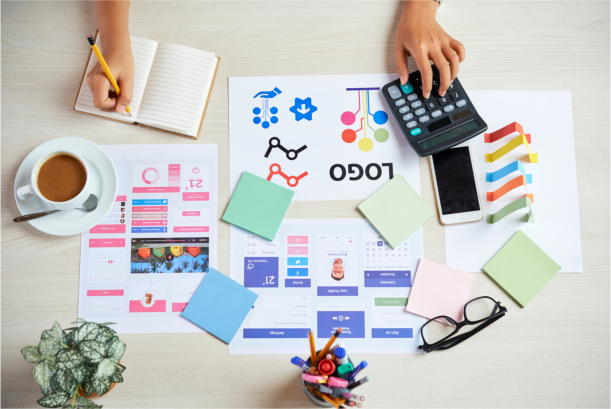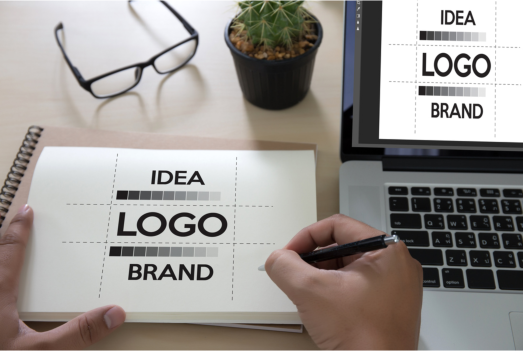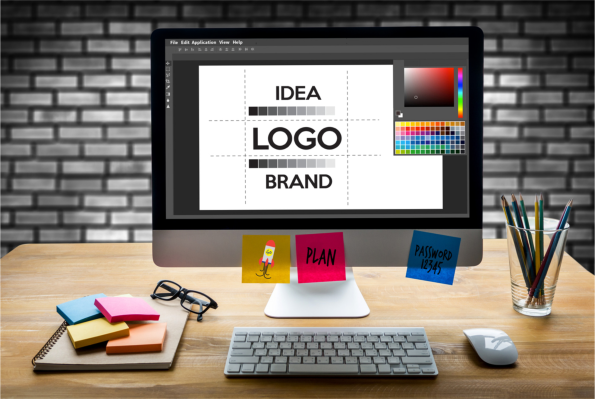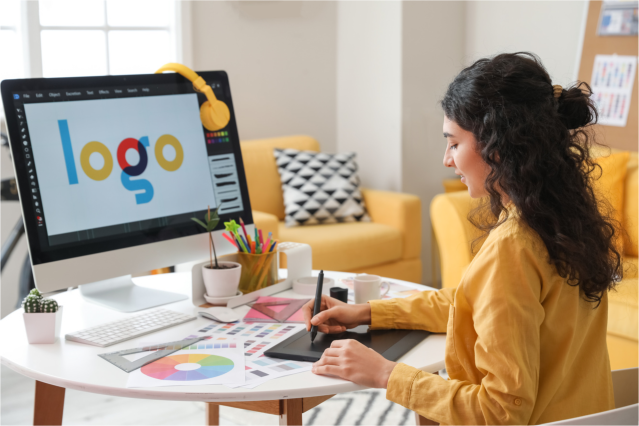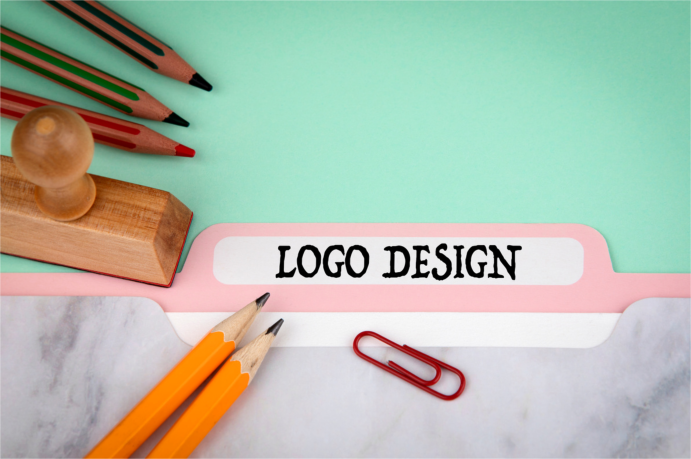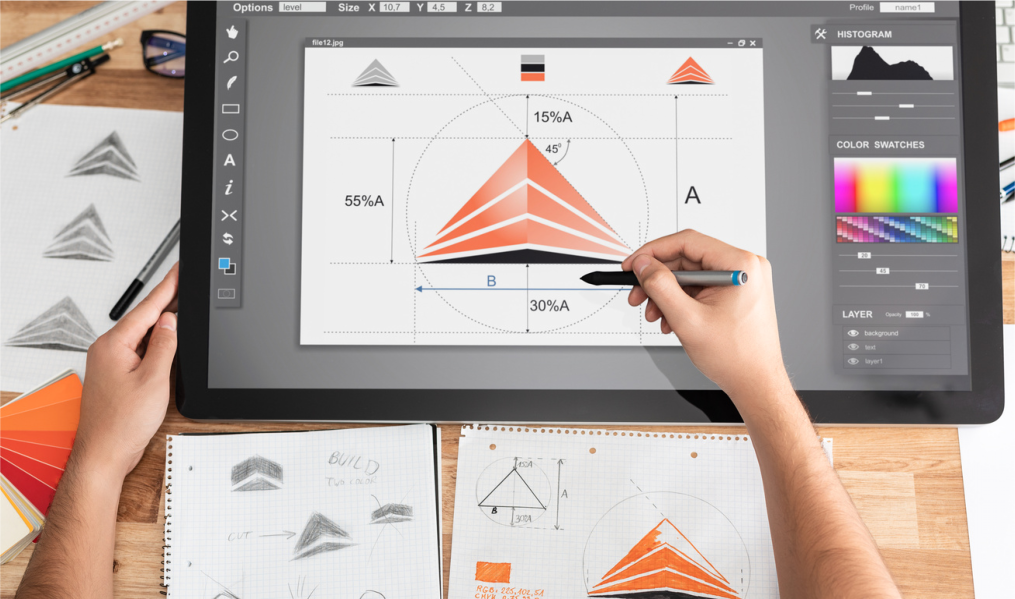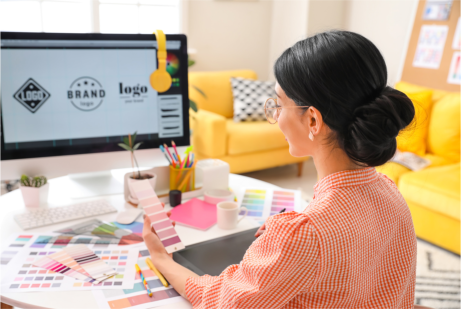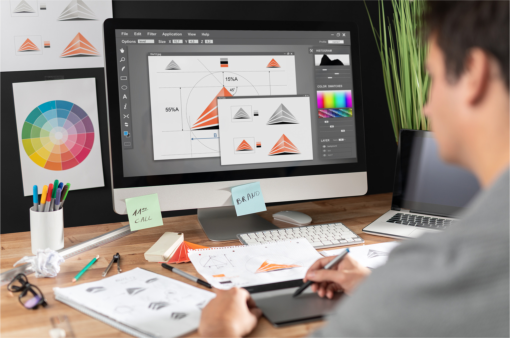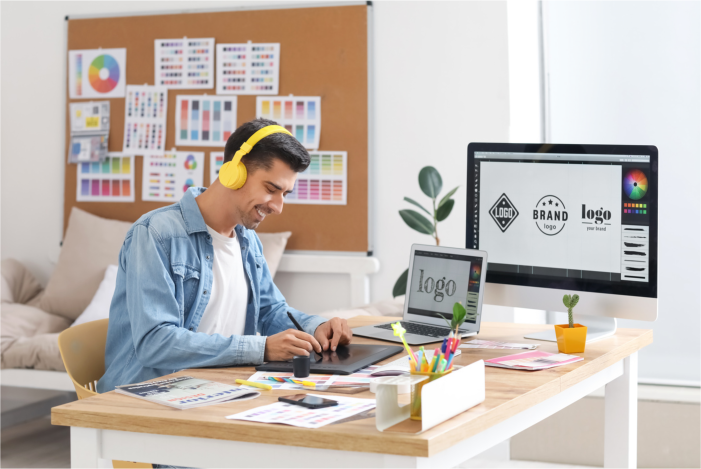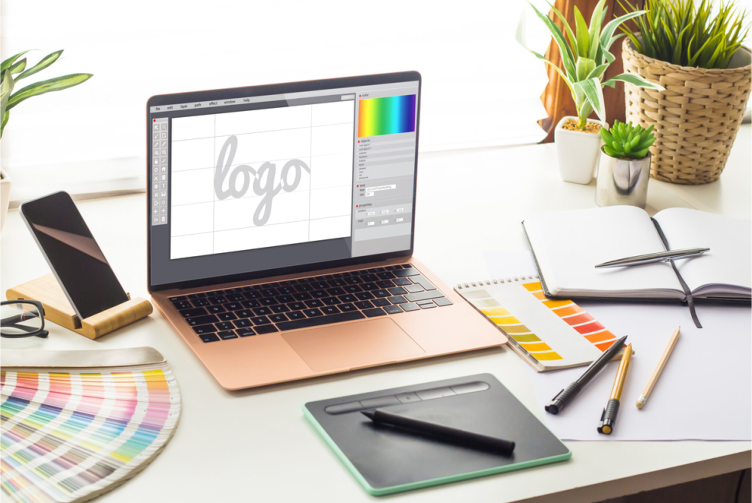The Evolution of Logo Design
Logos, the visual keystones of brands, have witnessed a fascinating evolution over centuries. From ancient emblems and royal seals to modern digital icons, the journey of logo design mirrors the cultural, technological, and artistic shifts of societies. Dive with us as we explore this captivating transformation.
Brief History of Logos
In the beginning, early societies used symbols and insignias as a means of representation, often showcasing power or communal beliefs. Fast forward to the industrial revolution, and we witness the rise of corporate branding. This era saw businesses adopting unique logos as a means to distinguish themselves in an increasingly competitive marketplace. As the digital age dawned, minimalism became a favored style, as brands aimed for clean, scalable logos that would look impeccable on both a smartphone screen and a billboard.
The Ancient Beginnings
- Seals and Symbols: Ancient civilizations like the Egyptians, Greeks, and Romans used hieroglyphs, symbols, and seals as forms of identification and representation. These symbols, often imbued with religious or cultural significance, can be seen as precursors to modern logos.
- Heraldry: In the Middle Ages, coats of arms became popular. These were unique designs used by knights and noble families to identify themselves, particularly in battle.
The Rise of Trade and Early Corporate Branding
- Trade Symbols: As trade routes expanded and markets grew crowded, artisans and merchants began using symbols and signs to distinguish their goods and services. Think of the blacksmith’s anvil or the baker’s pretzel.
- Printing Press Revolution: The invention of the printing press in the 15th century was a turning point. Businesses started using unique symbols on printed materials, making consistent branding more crucial.
Industrial Revolution and Mass Production
- Emergence of Corporate Identity: The industrial age heralded the rise of large corporations. Companies like Coca-Cola and Ford began to recognize the importance of having a consistent and recognizable brand image. Their logos became symbols of trust and quality.
- Advent of Advertising: As advertising mediums proliferated, logos began to play a pivotal role in marketing campaigns, becoming the visual shorthand for a brand’s promise.
The Digital Age and Modern Branding
- Simplification: With the rise of digital platforms and devices, logos needed to be easily identifiable across various screen sizes. This led to a trend of minimalism, stripping logos down to their essential elements.
- Interactive Logos: The internet brought about the possibility of interactive and animated logos, adding a new dimension to branding. Logos could now morph, change, and interact with users, enhancing brand engagement.
21st Century: Dynamic and Fluid Branding
- Responsive Design: As consumers accessed content across multiple devices, logos needed to adapt. Brands developed multiple logo variations to ensure optimal visibility and recognition across platforms.
- Brand Flexibility: Companies like Google have showcased ‘dynamic branding’ – where the logo can take on various forms and styles while retaining its core identity. This allows for creativity while ensuring brand consistency.
The Importance of Trends in Design
In the realm of design, trends act as a compass, guiding creatives toward what’s current, relevant, and resonant. Far from being fleeting whims, they mirror societal shifts, technological progress, and the evolving tastes of consumers. In this exploration, we dive into why recognizing and harnessing these trends is pivotal for designers.
Reflecting Cultural Shifts and Societal Values
- Voice of the Times: Design trends encapsulate the spirit and mood of an era. The roaring twenties, for example, brought Art Deco into the limelight, with its bold geometric patterns reflecting society’s optimism and zest for life.
- Societal Priorities: Today’s emphasis on sustainability and eco-consciousness is manifested in designs that favor natural materials, minimal waste, and green themes. Designers thus not only reflect but amplify societal values through their creations.
Ensuring Brand Relevancy and Audience Engagement
- Staying Ahead: For brands, aligning with contemporary design trends ensures they remain fresh and appealing to their target audience, reinforcing their market position.
- Building Connections: A design in tune with current trends resonates more deeply with consumers, fostering a sense of connection and relevance. It’s a non-verbal communication that says, “We understand and are part of the current cultural moment.”
Standing Out in the Competitive Landscape
- Innovation as Differentiation: In saturated markets, innovative design inspired by the latest trends can be a game-changer, setting brands or products apart from competitors.
- Consumer Expectations: As consumers become more design-savvy, they expect brands to be current and in the know. Leveraging design trends can help meet these elevated expectations.
Catalyzing Creativity and Exploration
- Inspiration for Creatives: For designers, trends act as sparks of inspiration, pushing them to explore new techniques, palettes, and motifs.
- Evolution and Growth: Riding the wave of trends allows designers to grow and evolve, keeping their work dynamic and preventing creative stagnation.
The Potential Pitfalls of Blindly Following Trends
- Losing Authenticity: While trends offer guidance, slavishly following them can lead to a loss of originality. Brands and designers risk becoming indistinguishable from a sea of similar-looking entities.
- The Ephemeral Nature of Trends: What’s in vogue today might be passé tomorrow. Design decisions should thus strike a balance between current trends and long-term vision.
The Top 8 Logo Design Trends for 2023
Geometric Simplification
Simplicity is sophistication. The trend leans towards uncluttered, straightforward shapes, stripping away excess to achieve clarity. For instance, Apple’s iconic apple logo and Google’s G signify the power of uncomplicated designs.
Vintage Revival
Everything old becomes new again. This trend sees brands revisiting and drawing inspiration from classic designs, injecting them with a modern twist. Pepsi, with its retro font and vintage red, white, and blue color scheme, exemplifies this renaissance.
Dynamic and Animated Logos
Static logos are giving way to dynamic interpretations, especially in digital spaces. Animated logos grab attention, telling brand stories in seconds. Spotify, with its pulsating logo on app launch, leverages this trend brilliantly, offering both visual appeal and brand recall.
Gradients and Color Transitions
Color gradients introduce depth and dimension to logos. They break the monotony of flat designs, infusing them with life and energy. Instagram’s logo evolution, transitioning from a retro camera icon to its current vibrant gradient, stands as a testament to this trend’s success.
Organic and Hand-drawn Elements
In an increasingly digital world, there’s a longing for the human touch. Hand-drawn elements in logos evoke authenticity, warmth, and approachability. Mailchimp, with its quirky, hand-drawn black and white mascot, demonstrates this trend’s charm effectively.
Depth and 3D Design
Three-dimensional logos create an illusion of depth, making them pop out and demand attention. This trend, when used judiciously, adds a touch of realism to designs. Think of the subtle shadow effects in the Samsung logo.
Negative Space Mastery
Utilizing white or negative space can lead to innovative and memorable logos. FedEx, with its iconic arrow hidden between the ‘E’ and ‘x’, showcases the potential of this design technique.
Cultural and Inclusive Representation
The world is more interconnected than ever, and logos are reflecting this global mindset. Brands are integrating diverse cultural elements and inclusive symbols to resonate with a broader audience. Mastercard’s introduction of its True Name initiative, allowing for chosen names on cards, exemplifies this inclusivity.
Integrating Trends Without Losing Brand Identity
With the ever-evolving design landscape, the temptation to jump on the latest trends is strong. But how does a brand ensure it’s staying current without sacrificing its core identity? This delicate balance is crucial to maintain relevance while ensuring long-term brand recognition.
Evaluating Brand Values and Messaging
- Rooted in Core Principles: Before integrating any trend, it’s essential to have a clear understanding of the brand’s mission, values, and personality. Any design change, however trendy, should not dilute these foundational elements.
- Consistent Messaging: While visual elements may evolve, the underlying message should remain consistent. Trends should enhance the message, not overshadow or alter it.
The Art of the Refresh
- Subtle Overhauls: A complete redesign can be jarring and risk alienating loyal customers. Often, subtle tweaks — like updating a color palette, refining a logo, or incorporating a new font — can make the design feel fresh without alienating existing clientele.
Case Studies
- Apple: Apple’s logo evolution offers a masterclass in subtle updates. From the multi-colored apple of the 70s and 80s to the monochromatic designs of today, the core logo remains instantly recognizable.
- Coca-Cola: While the soda giant has played with its packaging and advertising, the core logo, with its distinctive script, has remained largely unchanged for over a century, proving that sometimes, less is more.
Testing and Feedback
- Consumer Insights: Before rolling out significant design changes, brands can benefit from consumer feedback. Tools like A/B testing, focus groups, or surveys can provide invaluable insights.
- Iterative Approach: Based on feedback, brands can refine their designs iteratively. This approach ensures the updated design resonates with the target audience while staying true to the brand’s identity.
Understanding Longevity vs. Fads
- Deciphering the Trend Lifespan: Not all trends have staying power. Brands must discern between a long-lasting shift in design (e.g., the move towards minimalism) and transient fads that might quickly fall out of favor.
- Future-Proofing: Design changes should be made with an eye on the future. While it’s essential to be current, the design should also have elements that ensure it remains relevant in the years to come.
Balancing Innovation and Tradition
- Harmonizing the Old and New: Successful brands manage to find a harmony between their legacy and current design trends. The key lies in integrating modern elements without erasing the brand’s historical touchpoints.
- Celebrating Legacy: Brands with a rich history can use it to their advantage by integrating modern design elements while celebrating their legacy, ensuring they appeal to both long-time followers and new customers.
Conclusion
2023’s logo design trends emphasize both innovation and emotional resonance. For brands, it’s about finding the perfect balance between staying current and remaining true to their roots. It’s a call for designers to be bold, and innovative, yet always reflective of a brand’s enduring essence. This dynamic landscape demands the expertise of professionals who understand both the art and science of design.
Ubique Digital Solutions is at the forefront of these exciting changes, pioneering new ways to tell your brand’s story. Partner with us, and let us guide your brand to success, ensuring that your logos not only reflect today’s trends but also your unique business identity. Contact Ubique Digital Solutions today and take the first step towards elevating your brand to new heights!
FAQs
Q: How often should logos be updated or revised?
While there’s no hard and fast rule, brands typically consider logo revisions every 5-10 years, depending on market dynamics and internal changes.
Q: Are there risks in following design trends too closely?
Absolutely. Blindly following trends can make a brand appear inauthentic or even indistinguishable from others. It’s crucial to integrate trends that align with the brand’s values and messaging.
Q: How can small businesses leverage these trends on a budget?
Focus on adaptable and scalable designs. Use online tools and platforms that offer quality logo design templates, which can be customized with current trends.
Q: What’s the best way to test the reception of a new logo design?
A/B testing, surveys, and focus groups provide valuable feedback before a full-fledged launch.
Q: How do global brands manage logo changes across different cultures and regions?
By employing localized strategies. While the core logo remains consistent, certain elements might be adapted to resonate with specific cultures or regions.




